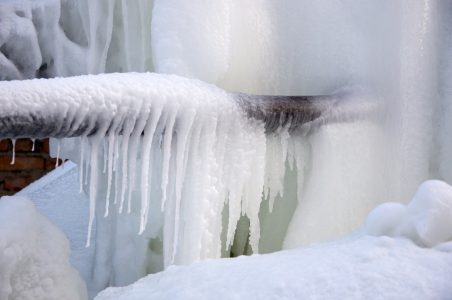Almost everyone has got their own unique thinking with regards to Winter Plumbing Precautions: Preventing Frozen Pipes.

Winter can damage your pipes, particularly by freezing pipes. Right here's just how to prevent it from occurring and what to do if it does.
Introduction
As temperatures drop, the risk of frozen pipelines increases, possibly resulting in expensive repair services and water damage. Comprehending just how to avoid icy pipelines is crucial for homeowners in chilly climates.
Recognizing Frozen Pipes
What triggers pipes to ice up?
Pipes ice up when revealed to temperature levels listed below 32 ° F (0 ° C) for prolonged durations. As water inside the pipelines freezes, it expands, putting pressure on the pipe wall surfaces and potentially creating them to burst.
Dangers and damages
Frozen pipelines can result in water interruptions, building damage, and costly repairs. Burst pipes can flood homes and trigger extensive structural damage.
Indications of Frozen Pipeline
Identifying icy pipes early can avoid them from rupturing.
Just how to identify frozen pipes
Look for decreased water circulation from taps, unusual odors or noises from pipelines, and noticeable frost on revealed pipelines.
Avoidance Tips
Insulating susceptible pipelines
Wrap pipelines in insulation sleeves or utilize warm tape to secure them from freezing temperatures. Concentrate on pipes in unheated or outside areas of the home.
Heating techniques
Keep interior spaces appropriately heated up, particularly locations with plumbing. Open up cabinet doors to allow warm air to circulate around pipes under sinks.
Safeguarding Outdoor Pipes
Yard hose pipes and outdoor taps
Disconnect and drain yard hoses before wintertime. Install frost-proof faucets or cover exterior faucets with protected caps.
What to Do If Your Pipes Freeze
Immediate actions to take
If you believe frozen pipes, maintain faucets open to ease pressure as the ice melts. Use a hairdryer or towels soaked in warm water to thaw pipelines gradually.
Long-Term Solutions
Architectural changes
Think about rerouting pipes away from outside walls or unheated locations. Include added insulation to attics, basements, and crawl spaces.
Updating insulation
Invest in top notch insulation for pipes, attic rooms, and walls. Correct insulation aids keep consistent temperature levels and minimizes the danger of icy pipelines.
Final thought
Stopping frozen pipes requires aggressive procedures and quick reactions. By recognizing the causes, indicators, and preventive measures, property owners can shield their plumbing throughout winter.
5 Ways to Prevent Frozen Pipes
Drain Outdoor Faucets and Disconnect Hoses
First, close the shut-off valve that controls the flow of water in the pipe to your outdoor faucet. Then, head outside to disconnect and drain your hose and open the outdoor faucet to allow the water to completely drain out of the line. Turn off the faucet when done. Finally, head back to the shut-off valve and drain the remaining water inside the pipe into a bucket or container. Additionally, if you have a home irrigation system, you should consider hiring an expert to clear the system of water each year.
Insulate Pipes
One of the best and most cost-effective methods for preventing frozen water pipes is to wrap your pipes with insulation. This is especially important for areas in your home that aren’t exposed to heat, such as an attic. We suggest using foam sleeves, which can typically be found at your local hardware store.
Keep Heat Running at 65
Your pipes are located inside your walls, and the temperature there is much colder than the rest of the house. To prevent your pipes from freezing, The Insurance Information Institute suggests that you keep your home heated to at least 65 degrees, even when traveling. You may want to invest in smart devices that can keep an eye on the temperature in your home while you’re away.
Leave Water Dripping
Moving water — even a small trickle — can prevent ice from forming inside your pipes. When freezing temps are imminent, start a drip of water from all faucets that serve exposed pipes. Leaving a few faucets running will also help relieve pressure inside the pipes and help prevent a rupture if the water inside freezes.
Open Cupboard Doors
Warm your kitchen and bathroom pipes by opening cupboards and vanities. You should also leave your interior doors ajar to help warm air circulate evenly throughout your home.

Do you like more info about Helpful Tips to Prevent Frozen Pipes this Winter? Try to leave feedback further down. We'd be happy to find out your insights about this piece. In hopes that you come back again in the future. If you appreciated our page please be sure to pass it around. Thanks for taking the time to read it.
Call Today
Comments on “Ways to Protect Pipes from Freezing: Specialist Advice”